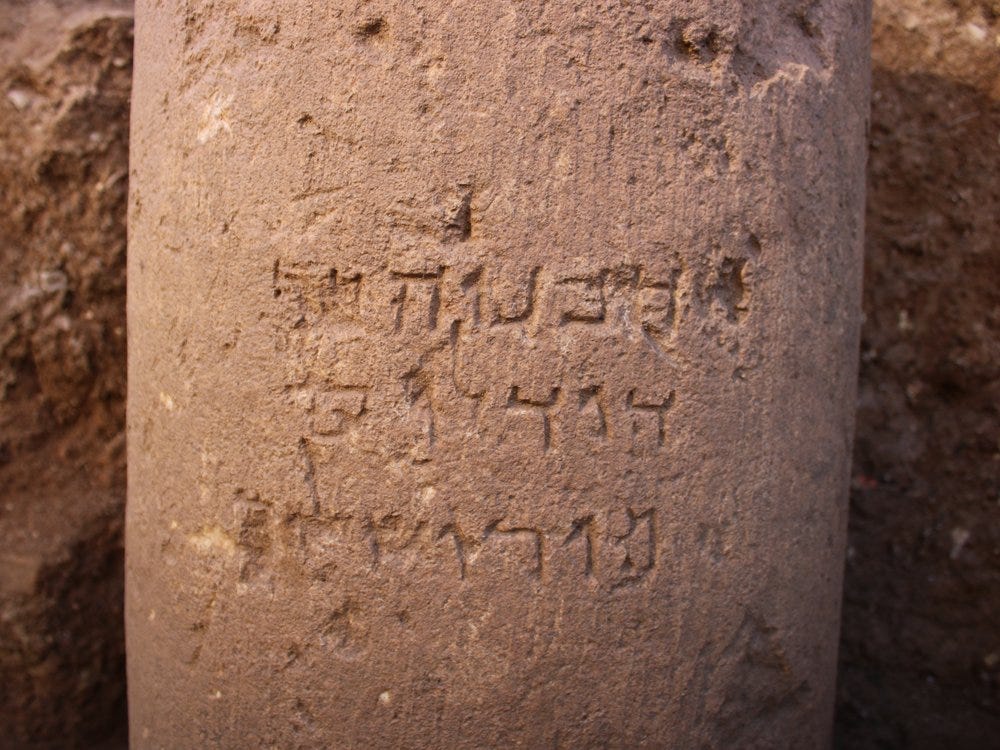How Do You Spell Jerusalem?
A (provocative) thought in honor of Yom Yerushalayim
For millennia, Jews have dreamed about the Holy City of Jerusalem, known in Hebrew as Yerushalayim. There is an interesting phenomena which we see in Tanach regarding the spelling of Yerushalayim. We find that the Hebrew spelling is only spelled 5 times as we know it, ירושלים. The rest of the instances are spelled without the latter letter yud and reads ירושלם.
This inconsistency has baffled archeologists and researchers over the years. The Israel Museum in their statement following the discovery of the pillar pictured above wrote:
“Dr. Yuval Baruch, Jerusalem Regional Archaeologist of the Israel Antiquities Authority, and Prof. Ronny Reich of Haifa University, who read and studied the inscription, note that "First and Second Temple period inscriptions mentioning Jerusalem are quite rare. But even more unique is the complete spelling of the name as we know it today, which usually appears in the shorthand version. This is the only stone inscripti…
Keep reading with a 7-day free trial
Subscribe to Shui’s Newsletter to keep reading this post and get 7 days of free access to the full post archives.



